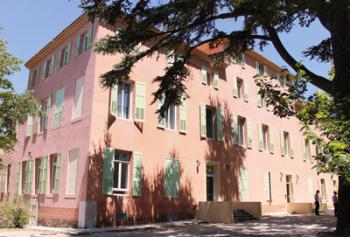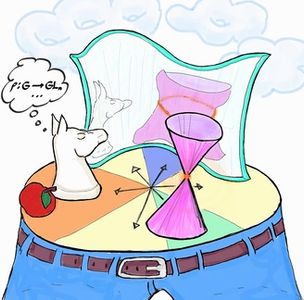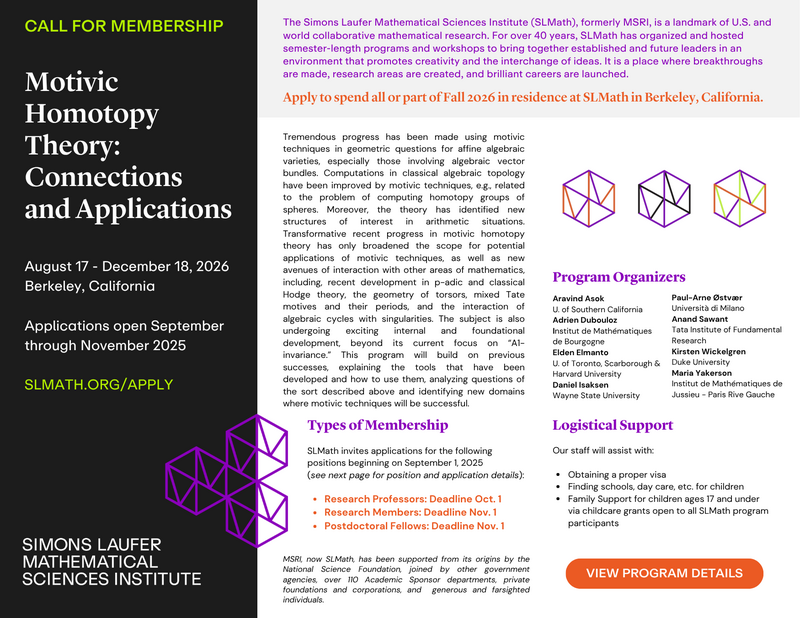Geometry and Dynamics for Discrete Subgroups of Higher Rank Lie Groups
Date: 20 January - 22 May 2026
Location: Simons Laufer Mathematical Sciences Institute
Event type: Extended Format
Organisers: Martin Bridgeman (Boston College), Richard Canary (Michigan), Amir Mohammadi (UCSD), Hee Oh (Yale), Maria Beatrice Pozzetti (Ruprecht-Karls), Jean-François Quint (Montpellier)
This research program will bring together two intellectual communities that have made significant advances in the study of discrete subgroups of higher rank semisimple Lie groups: the homogeneous dynamics community and the community studying geometric structures and Anosov groups.
A discrete subgroup Γ of a semisimple Lie group G may be studied from many different viewpoints. On the one hand, the quotient G/Γ is a homogenous space; through the lens of homogeneous dynamics one can study flows on these spaces, their orbit closures, measure classifications, counting and equidistributions. On the other hand, the group G acts on a plethora of different geometries, including Riemannian and non-Riemannian symmetric spaces, projective spaces and flag manifolds. In many cases, this induces interesting properly discontinuous actions of Γ which can be studied using geometric methods. A flexible class of such discrete subgroups is given by Anosov groups, introduced by Labourie in his study of Hitchin representations and now accepted as the natural higher rank analogue of convex cocompact subgroups of rank one Lie groups. In recent years, their study has made tremendous advances by drawing inspiration from classical Teichmuller theory, and the theory of Kleinian groups.
When G has rank one, there has already been a fruitful interaction between the two communities, resulting in important advances in understanding the dynamics of the frame flow and unipotent flow on the frame bundle of convex cocompact and geometrically finite hyperbolic manifolds. In turn this had important applications to Apollonian circle packings, Zaremba’s conjecture, expanders, affine sieve problems for thin groups, and related problems, as well as groundberaking work in Teichmuller dynamics.
Exciting applications of the interaction between homogeneous dynamics and Anosov representations have begun to emerge in recent years, suggesting that now is very promising time to bring together these two communities. The notion of a thin subgroup, inspired from number theory, is one of the many points of convergence. Other recent advances include the study of homogeneous dynamics in the setting of Borel Anosov groups, relations between the Hausdorff dimension of limit sets of Anosov groups with counting problems, as well as applications of the thermodynamical formalism in the study of Anosov representations. A strong link between Anosov groups and Hilbert geometry recently opened the door to a very active study of dynamics in these geometries.
This recent work seems likely to be just the first fruit of the interaction between dynamics and geometry for discrete subgroups of semisimple Lie groups.
Professor François Labourie (Côte d’Azur) has been appointed as a Clay Senior Scholar to participate in this program.
CMI Enhancement and Partnership program
Related events
See all events
Knotted Surfaces in Four-Manifolds
Park City Mathematics Institute

p-adic Kudla Program and p-adic Automorphic Forms
CIRM

Representation Theory Under the Influence of Quantum Field Theory
Simons Laufer Mathematical Sciences Institute

Motivic Homotopy Theory: Connections and Applications
Simons Laufer Mathematical Sciences Institute